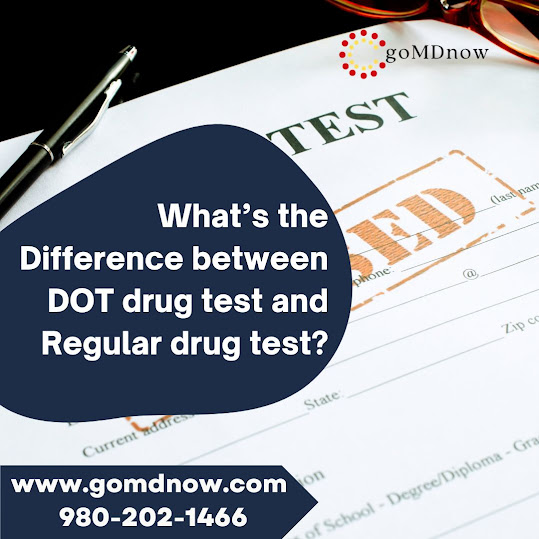The Real Impact of Vaping on Drug Tests Science vs. Social Media Myths
Vaping has rewritten modern nicotine culture.
It’s sleek. It’s discreet. It smells better than cigarettes.
And thanks to TikTok and social media, it’s wrapped in an aura of “safe,”
“clean,” and “it doesn’t show up on tests.”
But that last claim the idea that
vaping can’t affect a drug test is one
of the biggest misconceptions circulating online.
For safety-sensitive workers, employers, and especially commercial
drivers, understanding what vaping actually does to drug tests is more
important than ever. Social media trends don’t match scientific reality not even close.
Let’s break down what vaping really does (and doesn’t do) to test
results.
Myth #1: “Vaping is just vapor.
There’s nothing to detect.”
This is the most widely believed myth.
In reality:
Vaping produces aerosol not vapor filled with chemical solvents, nicotine or THC
molecules, and other compounds that your body metabolizes.
Drug tests don't look for “smoke.”
They look for metabolites left behind after these substances
enter the bloodstream.
Different vape oils, cartridges, and disposables leave behind different
metabolites.
Some of these are absolutely detectable, especially in standardized
tests.
If you want a deeper breakdown, this resource helps clarify the risks:
Can vaping cause a failed drug test?
https://www.gomdnow.com/blog/can-vaping-cause-a-failed-drug-test
Myth #2: “A THC vape won’t stay in
my system.”
THC vapes often contain far higher potency than traditional
cannabis.
The misconception comes from users assuming:
- It's a tiny amount
- It leaves quickly
- It’s “cleaner” than smoking
Not true.
THC metabolites can remain detectable for:
- Days after casual use
- Weeks after repeated use
Many drivers who vape “occasionally” are surprised when drug test results
show otherwise.
Myth #3: “Nicotine vapes are safe they don’t affect anything.”
Nicotine itself does not show up on standard drug screens.
But that’s not the real problem.
Here’s the part most people don’t know:
Cheap vape cartridges and refill liquids are often produced in facilities
that also handle hemp or THC products.
Which means:
- Cross-contamination is real
- Residual THC can appear even in
“nicotine-only” vapes
- Sensitive tests can detect trace
levels
To avoid confusion or disputes, businesses rely on structured
workplace drug testing programs to manage compliance and confirm results
properly:
https://www.gomdnow.com/consortium-signup
Myth #4: “Hemp vapes are legal, so
they won’t show up.”
This myth exploded with delta-8, delta-10, and THC-O products.
Legality and detectability are not the same thing.
Even products labeled:
- “0% THC”
- “THC-free”
- “Legal under the Farm Bill”
…can still contain psychoactive THC variants that show up on a
test.
Most drug tests don’t differentiate origin they simply detect cannabinoids.
Myth #5: “Oral fluid tests can’t
catch vaping.”
This is simply outdated information.
Oral fluid testing is gaining popularity because:
- It detects recent use
- It's extremely hard to cheat
- It captures THC from vape aerosol
quickly
- The collection process is
supervised
In many cases, oral fluid testing detects recent vaping faster than
urine.
Organizations that need faster, accurate results rely on nationwide
drug testing services for proper collection and lab processing: https://www.gomdnow.com/
What Science Actually Shows
Here’s what we truly know:
✔ Vaping doesn’t hide anything
from drug tests.
✔ THC vape oils contain high
potency, which increases detectability.
✔ Hemp and CBD vapes often
contain unlisted cannabinoids.
✔ Cross-contamination is common
in cheap cartridges.
✔ Oral fluid and urine tests
both detect vape metabolites.
✔ Social media oversimplifies
everything.
Drug tests detect metabolites, not smoke, vapor, or smell.
If a compound enters your bloodstream, it can appear on a test simple.
Why This Information Matters More
in 2025
Testing technology is improving.
Regulations are tightening.
And employers must demonstrate compliance, documentation, and safety measures.
These systems help:
- Educate employees
- Prevent policy violations
- Reduce legal liability
- Ensure accurate, trusted testing
- Keep workplaces safer
Final Thoughts
Vaping isn’t the loophole social media claims it is.
It doesn’t hide THC. It doesn’t vanish instantly. And it doesn’t bypass modern
drug tests.
The real issue isn’t the vape itself
it’s misinformation.
What you inhale still becomes chemistry inside your body.
And if it becomes chemistry, a drug test can detect it.
Understanding the science behind vaping isn’t just about avoiding a failed
test
it’s about making informed choices in a world full of misleading viral advice.
.png)
.png)



Comments
Post a Comment